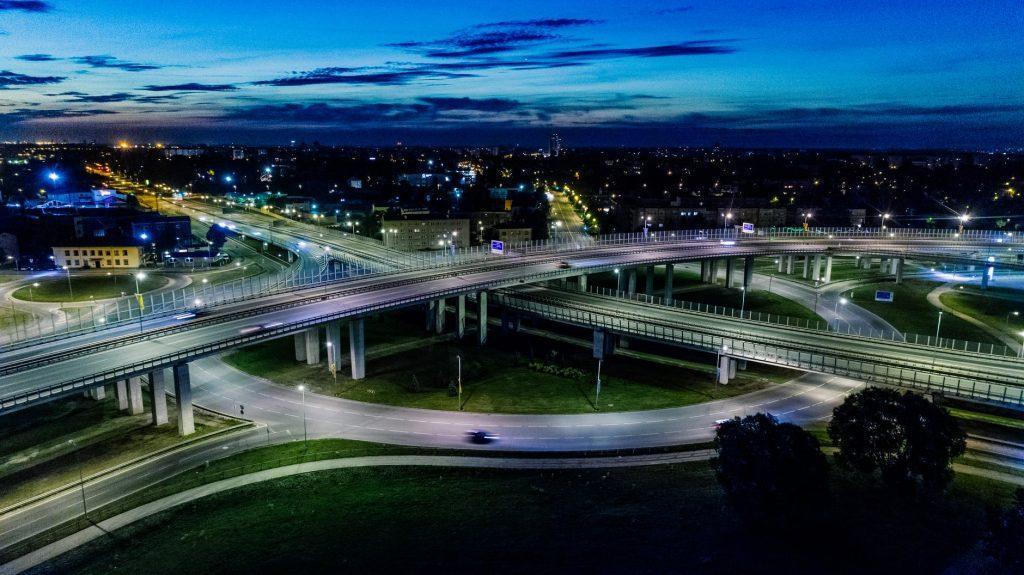Mobility hubs are tangible representations of nearly every new trend in mobility today, which generally follows the theme of coordination and collaboration with other mobility operations and stakeholders.
By Skip Descant
Mobility hubs are more than spots to catch a bus and grab an e-scooter. They are tangible representations of nearly every new trend in mobility today, which generally follows the theme of coordination and collaboration with other mobility operations and stakeholders.
And because of this, mobility hubs tend to represent the opposite of how transportation has traditionally been designed and administered.
“The system that we had was very siloed,” remarked Andy Wolpert, deputy program manager for Smart Columbus, in Ohio, as he reflected on the evolution of mobility hubs in the city and how they represented a clear deviation from how transportation had always been conceived. In Columbus, transit operated independently from other systems, like park-and-ride operations or private-sector mobility providers like scooters.
“We want all these modes to act as one, and one system. That’s where the mobility hubs and the multi-modal trip-planning really happen in concert together,” said Wolpert, speaking on a panel March 9 organized by Urbanism Next, a transportation and urban planning research division at the University of Oregon.
Columbus organized and launched six mobility hubs in the Linden neighborhood. They are the culmination of public-private and community collaborations to bring together various mobility modes at a single location.
“We wanted to improve connection to public transit, as part of our mobility hubs, really solving that first-mile, last-mile challenge that people expressed to us,” said Wolpert.
The mobility hubs include informational kiosks, which also provide a public Wi-Fi signal. They have bike-share and scooter operations, as well as ride-hailing. The hubs were launched in July 2020 and have been the origin or destination of some 1,000 bike-share trips, and facilitated more than 65,000 kiosk interactions, said Jeff Kupko, senior associate for Michael Baker International, and who served as the project manager for the mobility hubs project in Columbus.
In Pittsburgh, transportation officials were given a shoestring budget of $300,000 to deploy mobility hubs. And since these need to serve as places to recharge scooters, bikes and even electric vehicles, they need to be connected to the electric grid, which can quickly eat through the budget if trenching is involved, explained Tosh Chambers, senior program director for Move PGH in Pittsburgh, speaking on the panel.
The city partnered with bike and scooter operator Spin, as well as Swiftmile, to deploy the charging equipment. And then connected it to existing streetlights, avoiding expensive trenching and repaving work.
“One of the biggest things to figure out about mobility hubs is the electrification, especially as we’re having more e-bikes come in, and electric vehicle charging being more of a component,” said Chambers.
“That, I think all needs to be coordinated, as one kind of hub for e-vehicle charging to combine costs,” he added. “But you have to get all those different interests and stakeholders to play nicely and kind of agree, this is what we’re doing, this is where we’re doing it. So it’s a bit of a challenge, but it’s exciting.”
To get so many stakeholders to “play nicely” takes coordination and collaboration, which may sound easier than it sometimes is.
“As we’ve heard from other mobility providers, from a national level, they want to create their own type of system, their own type of hubs,” said Wolpert, remarking on some of the barriers to these types of projects.
Mobility hubs have been launched in other cities like Boston and Minneapolis, and are often touted in transportation circles as a foundational concept for where transportation should be headed. As cities reimagine transportation and transit, they’re turning toward innovative attempts to bring multiple modes together, with the essential aim of making it easier for residents and others to choose a mode of travel other than the single-occupancy car.
“There’s a lot of people planning on doing them, trying to figure out siting, trying to figure out partners. But there’s few actual pilots,” said Nico Larco, director of Urbanism Next at the University of Oregon.
Wolpert, in Columbus, said mobility hubs are a good fit for busy corridors the city would like to reimagine from a land use and mobility perspective.
“So yes, I really do think there’s an opportunity there,” said Wolpert.
Link: https://www.masstransitmag.com/technology/facilities/news/21260892/us-are-mobility-hubs-the-future-of-urban-transportation?utm_source=pocket_mylist
Source: https://www.masstransitmag.com
